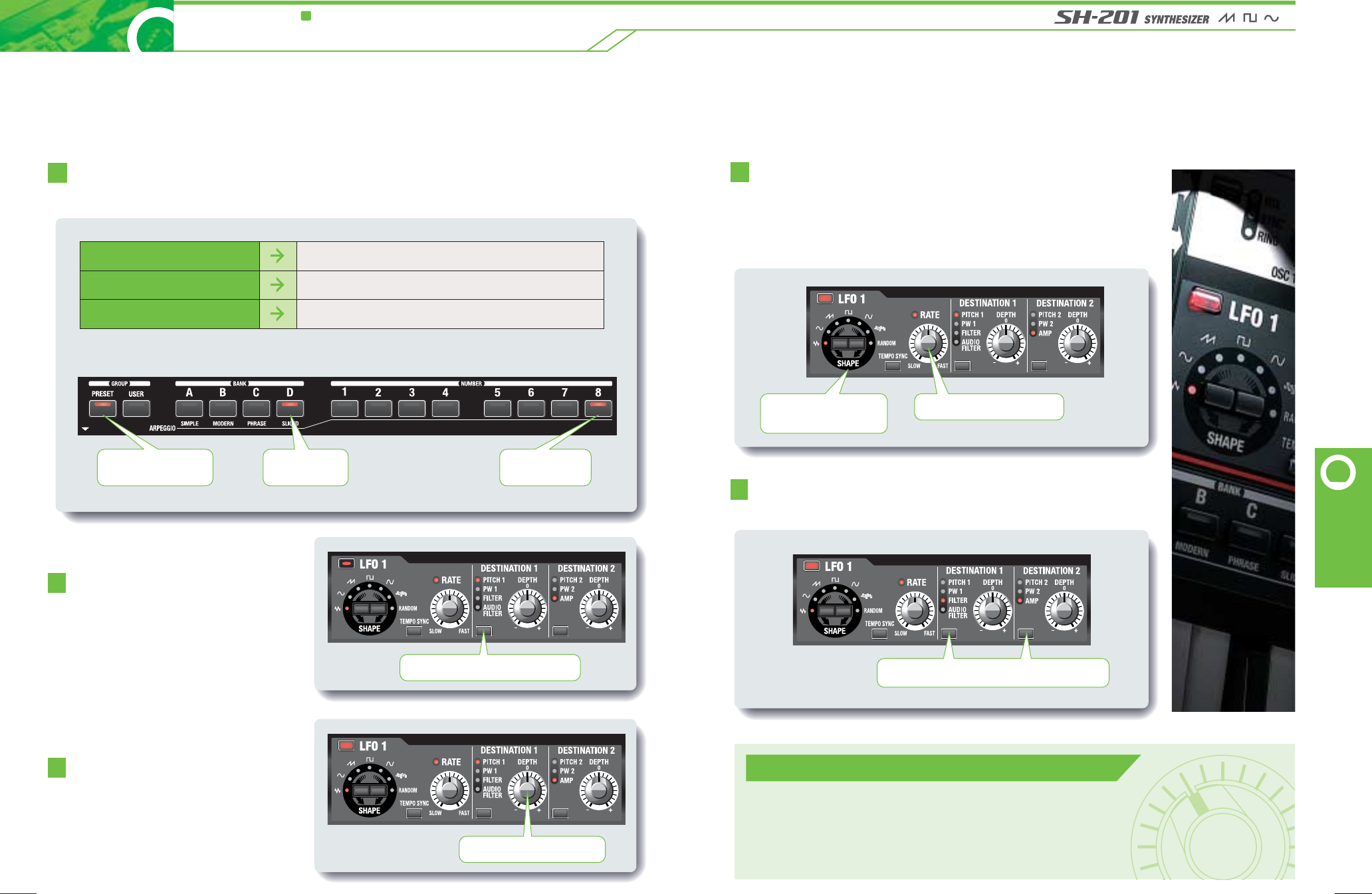
This is a sound generator capable of producing low
frequencies. On analog synthesizers, it is also called LFO
(*1)
.
To understand the LFO effect, let’s select the basic patch [PRESET D-8] once again.
Vibration of Frequency (OSC)
Vibration of Timbre/Sound
Vibration of Volume (AMP)
Vibrato (voice, violin, etc.)
Wah Wah (woodwinds, etc.)
Tremolo (organ, electric piano, etc.)
T o achieve expressive, animated sounds, many musical instruments are played with cyclic vibration
of sound frequency, volume, and/or timbre. LFO creates these effects for a synthesizer.
P ress the [DESTINATION1] button
and select the target for the LFO
to process. Try the vibrato effect here
by selecting PITCH1.
T urn the [DEPTH] knob gradually while
playing. As you turn the knob all the way
from left to right, the vibrato becomes
deeper.
Y ou can switch the vibrato waveform by pressing the [SHAPE] button.
Additionally, turning the [RATE] knob will change the speed
of vibrato. Try out various settings for vibrato with different waveforms
and speeds. For example, the human voice or a violin would typically
have a vibrato rate of 2 to 7 cycles per second.
P ress the [DESTINATION] button and select AMP for tremolo,
or FILTER for growl effects.
(*1) Low Frequency Oscillator
Press
[
PRESET
]
Press
[
D
]
Press
[
8
]
Press these buttons
to select the waveform
Press these buttons to select the destination
Press this button to select PITCH1
Turn this knob as you play
Turn this knob as you play
On the other end, with high-capacity wave memory, are synthesizers that authentically
reproduce acoustic instruments. These sample-playback synthesizers are useful for a wide
range of genres — from rock, pop, R&B, jazz, classical, and any other style that requires
accurate recreations of realistic instruments and sounds.
PCM Synthesizer
The Function of Controls
4
4
Chapter
LFO
(
Low Frequency Oscillator
)
1615
4
Chapter
The Function
of Controls

















